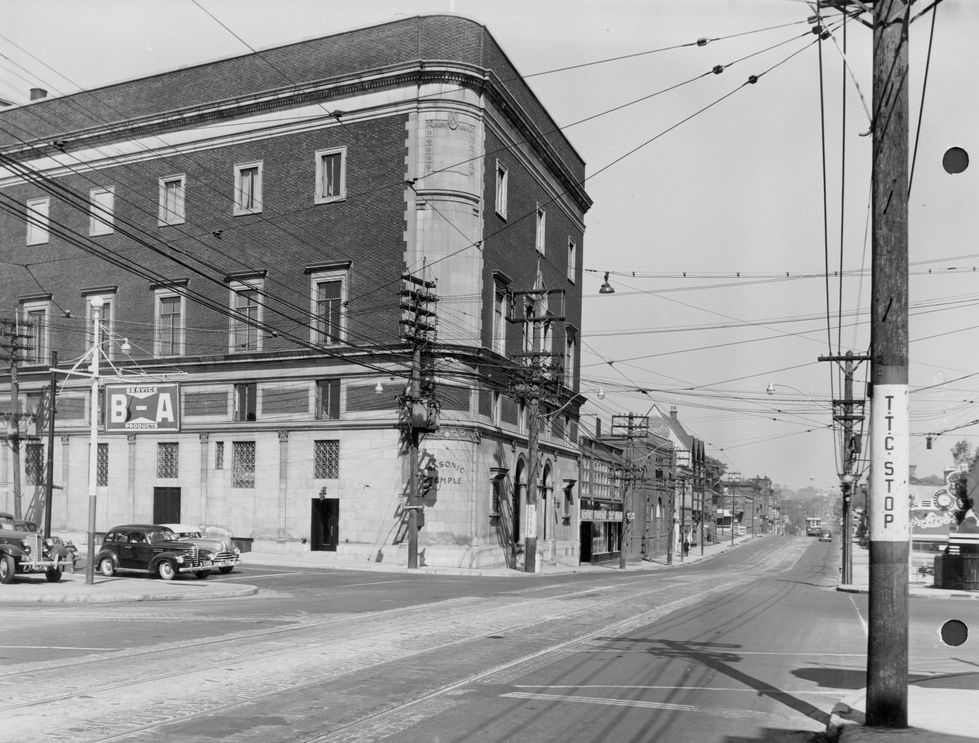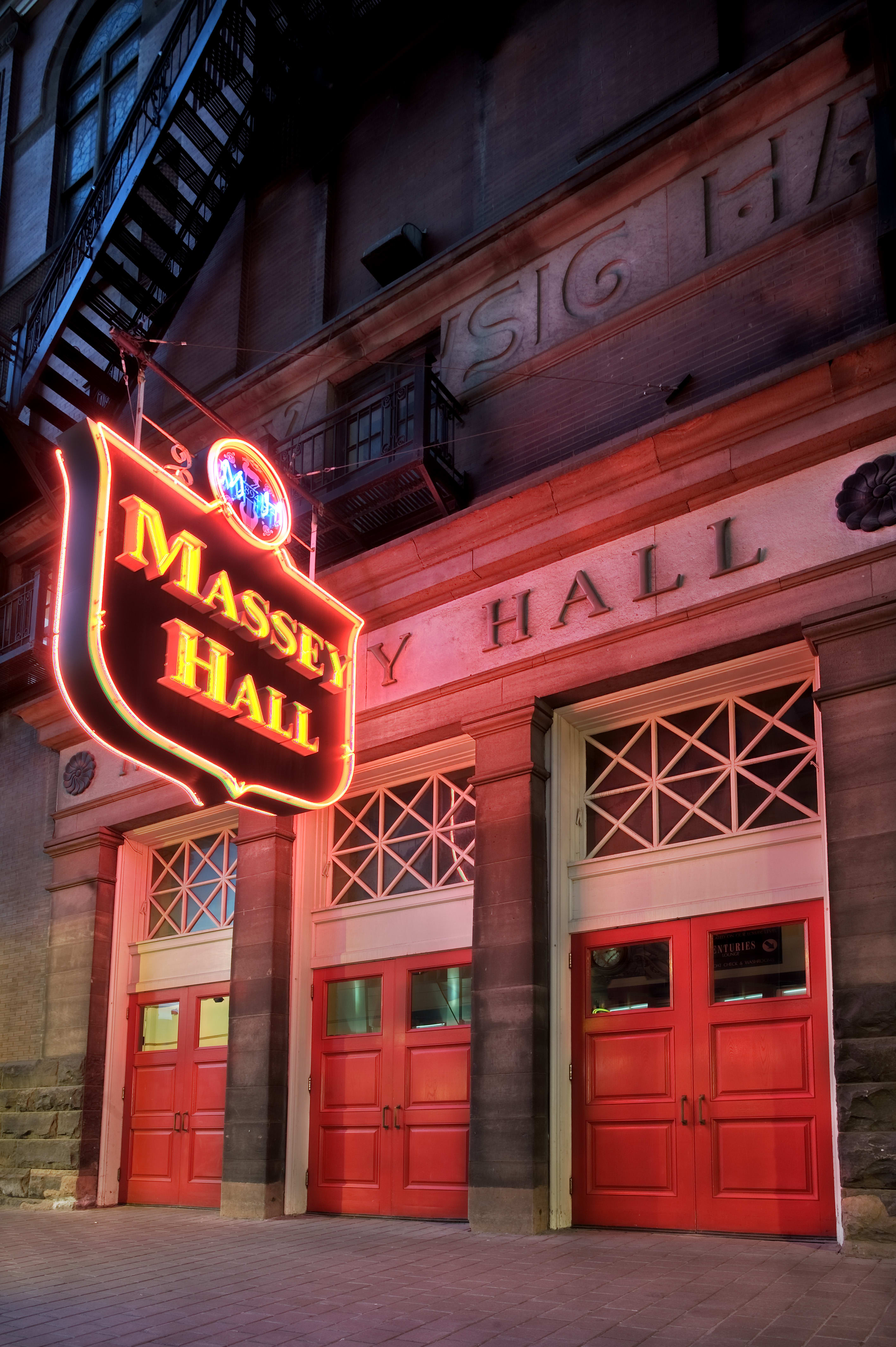
The first band to receive the Order of Canada, Rush was born in the basement of a Willowdale home in North Toronto. With a unique, bombastic sound, the music of Rush leans into the strong guitar riffs of hard rock as well as prog rock’s diverse instrumentation and jazz virtuosity.
With a career spanning four decades, Rush has sold over 40 million albums and toured all over the world. But Toronto has always been home for Rush.
North York Origins
In the basement of a suburban North York home in 1968, 16-year-old Alex Lifeson started the band that would change his and his best friend’s life. Rush started with Alex on guitar, his neighbour John Rutsey on drums, and Jeff Jones on bass.
After their first gig together at a local drop-in centre, Jones left the band. Apparently, his mom didn’t want him hanging out with the band members. Lifeson then asked his best friend and classmate, Geddy Lee, to join the band on vocals and bass guitar.
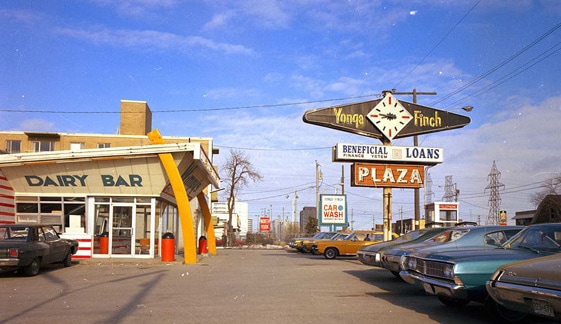
City of Toronto Archives, Fonds 1257, Series 1057, Item 9009

A Canadian officer speaks with a family of Polish refugees in 1944 France. Canada experienced a wave of immigration from Poland and other Eastern European countries following World War II. Like Geddy Lee’s parents, over 50% settled in Ontario.
Lieut. Michael M. Dean, Canada Dept. of National Defence, Library and Archives Canada, PA-129192
First-Generation Canadians
Band members Alex Lifeston and Geddy Lee are both first-generation Canadians. Alex Lifeston was born Aleksandar Živojinović: his parents had fled Serbia as refugees after World War II. Denied entry to the United States, they arrived in Canada.
Geddy Lee’s family also fled persecution. Lee’s parents were Holocaust survivors who met at a work camp in Poland; they moved to Canada in the 1940s after imprisonment at Aushwitz.
Growing up in Willowdale, Lee was often teased about his mother’s strong Polish accent, which made his birth name, “Gary Lee”, sound like “Geddy Lee” to his classmates and neighbours. The nickname stuck. When he was 16, he legally changed it from Gary Lee Weinrib to Geddy Lee Weinrib in her honour.
A DIY Debut Album
After a few years playing in Toronto clubs and venues during the early 1970s, Rush decided it was time to make an album. Without a record label to foot the bill, the band pooled their money to reserve late-night recording time at Eastern Sound Studios, the famous Yorkville recording studio that had produced albums for the likes of Bruce Cockburn and Cat Stevens.
Unhappy with the quality, they made a second attempt at Toronto Sound Studios in East York. Rush released the self-titled album, Rush, under their own label, Moon Records, in early 1974. Shortly after its release, drummer John Rutsey left the band, replaced by Neil Peart, who became a permanent fixture in Rush’s lineup.
The first stab at the album was done in eight hours following a gig. We were warmed up after the show, and it came very easy.
Then it was recut in November in about three days, including mixing time. We were lucky in that most of the songs came in two or three takes.
—Alex Lifeson, Rush, 1974
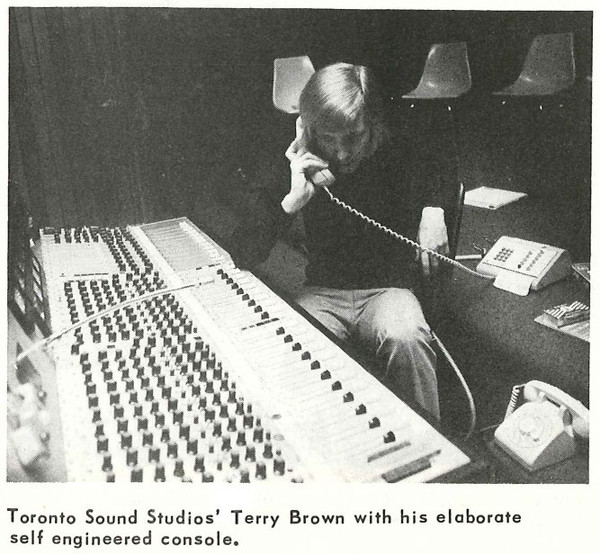
Rush recorded its first several albums at TSS.
Toronto Sound Studios Advertisement, December 1971
Listen: Working Man
The band could only afford to make a few thousand copies of its debut album, but one found its way into the hands of Donna Halper, a DJ working at the radio station WMMS in Cleveland, Ohio.
She enjoyed the band’s hard rock sound and featured Rush’s song “Working Man” on her regular dj setlist. Representatives of Mercury Records heard the song and signed Rush to its label, re-releasing their debut album in the United States.
Suddenly, Rush was a band with an international fan base.
This online exhibition uses third-party applications including Spotify and YouTube. Check with your organization’s web administrator if you are unable to access content from these channels in the exhibition.
Sci-Fi Success
In the late 1970s, Rush began to add narratives to their album, supplementing the stories in the songs with complex instrumentation. The band’s 1976 album, 2112, was their most ambitious to date. The album told the sci-fi story of a world under the authoritarian rule of the Solar Federation. With all art and culture under strict government control, a young man tries (and fails) to use music to save his civilization.
Written while Rush was on tour, the band recorded the album at the Toronto Sound Studios. Released in the spring of 1976, it became a benchmark for the band, attracting new fans and winning widespread critical praise. 2112 became Rush’s first platinum album in Canada. In 2018, the album received the Polaris Heritage Prize Audience Award.
The biggest lesson that 2112 imparted was that you can improve yourself without compromising your true nature.
—Rob Hughes, music writer
This online exhibition uses third-party applications including Spotify and YouTube. Check with your organization’s web administrator if you are unable to access content from these channels in the exhibition.
Listen: 2112
The title track from Rush’s 1976 album, 2112, lasts for over 20 minutes! This lengthy track, which is divided into five acts similar to a play or opera, tells the story of a man searching for freedom through music in an authoritarian world.
The creativity and independence Rush showcased in this song and album earned the group international praise. 2112 remains one of the band’s most influential albums.
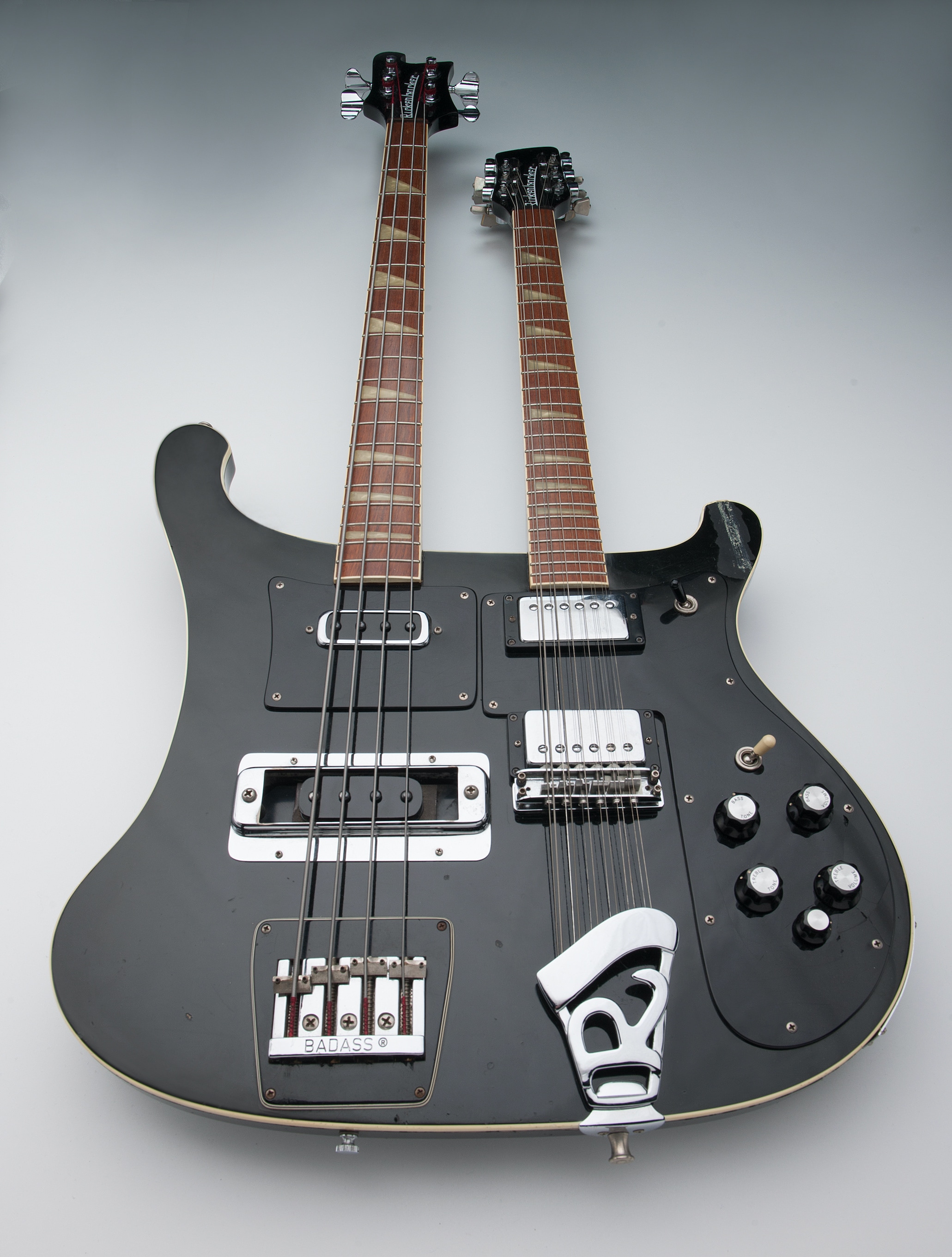
In the late 1970s, Geddy Lee increasingly turned to doubleneck guitars, such as this 4080 Rickenbacker, to achieve on stage what the band had written in the studio. Use the Zoom feature to explore the intricate details of Lee's beloved instrument.
Courtesy of the Canadian Museum of History and Geddy Lee
A Prog Rock Guitar
This 4080 Rickenbacker doubleneck electric guitar is one of Geddy Lee’s prized instruments.
The sci-fi sounds Rush created on 2112 in the studio would have once been impossible to recreate on stage. But thanks to the development of new onstage equipment, such as bass pedals and synthesizers, Rush could perform its ground-breaking album live in front of thousands of fans.
Doubleneck guitars, which included both a six-string bass and a six-string guitar, were the perfect instrument for a versatile prog rock musician. They became popular among many 1970s bands, such as the Eagles, Genesis, and, of course, Rush.
As Rush’s bass player, Geddy Lee has had a lifelong fascination with instruments. As a teenager, he would press his nose into the glass window of music stores to peer at the rows of guitars. Beginning in the late 1970s, Lee started to acquire rare or unusual bass guitars, often performing with them on tour with Rush.
When other bands cite us as an inspiration or an influence, [the theme of 2112 is] what they're talking about, more than anything. I've often read when we're mentioned as an influence for a band they'll say, 'We're big Rush fans, because they did it on their own, they did it their own way, and that told me that I could do the same thing. If I stick with it, persevere, I can do things the way I want them to be.'
— Alex Lifeson, Rush
Playing Toronto
The band toured the album throughout the United States and Canada. But it was their opportunity to perform at some of the most prestigious venues in Toronto, such as Maple Leaf Gardens and the Concert Hall, places they had once only dreamed of playing.
The tour for their wildly successful 2112 album culminated in a three-day gig at Massey Hall in June 1976, where they recorded their first live album, All the World’s A Stage.
Find Out More about Playing Toronto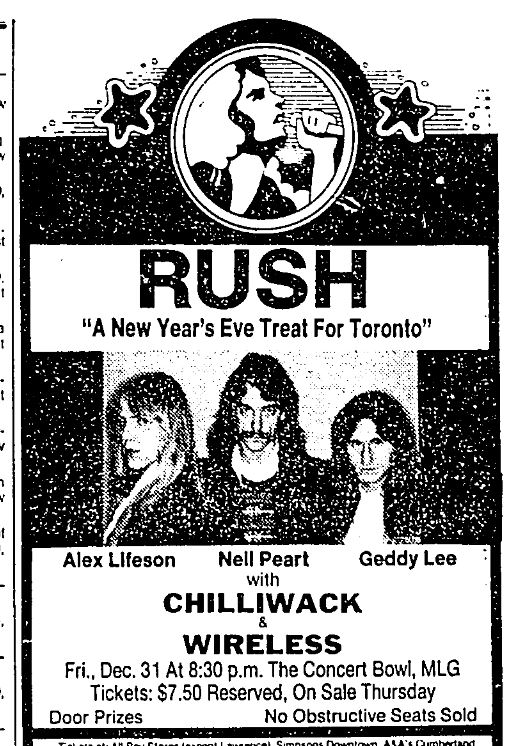
Rush performs at Maple Leaf Gardens for New Year’s Eve in 1978. Courtesy of the Toronto Star
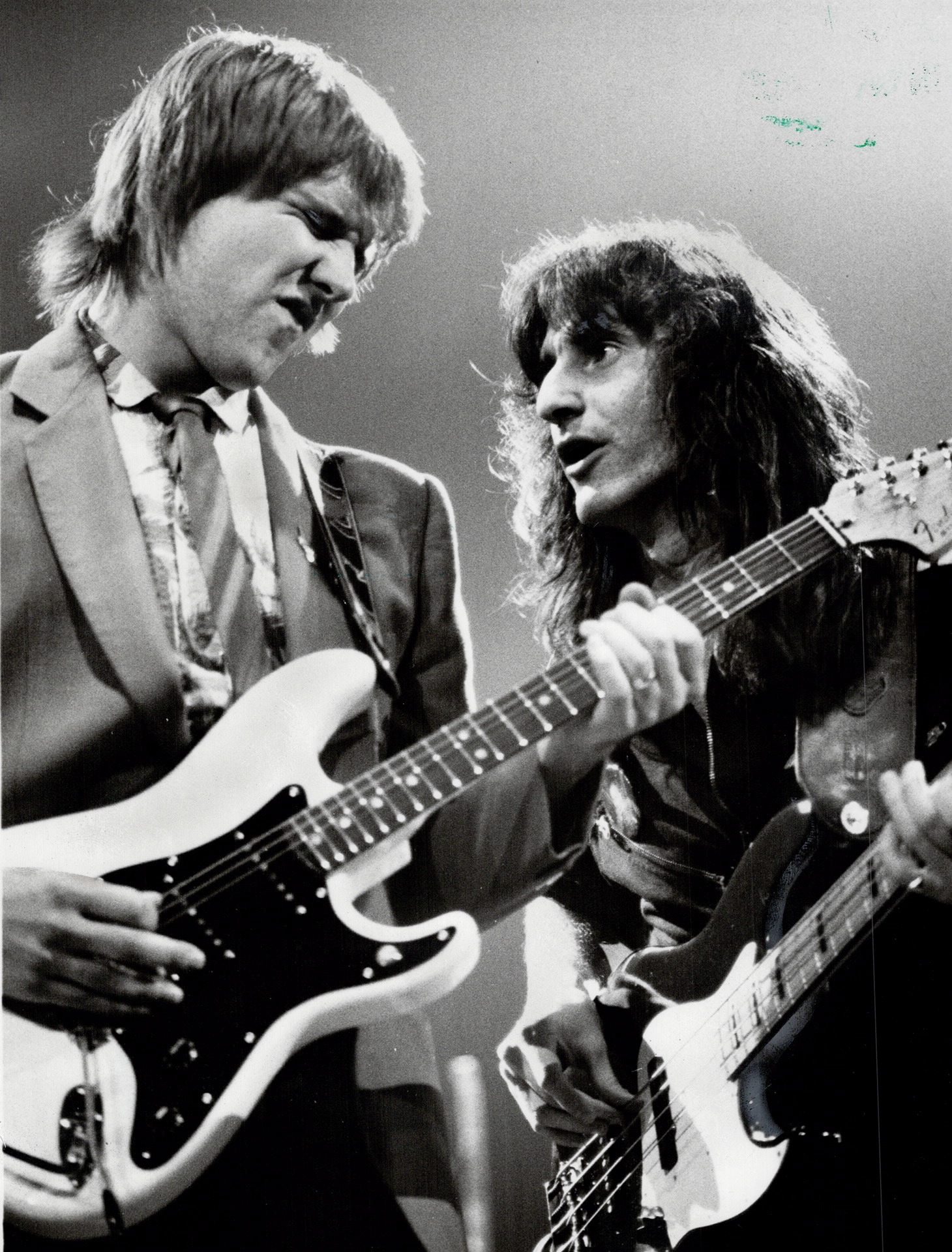
Alex Lifeson and Geddy Lee jam on stage at Maple Leaf Gardens in 1981. Photo by Michael Stuparyk, courtesy of the Toronto Star
Subdivisions
With the core members of Rush, Alex Lifeson, Geddy Lee, and Neil Peart, hailing from in or around Toronto, the city featured prominently in many of the band’s songs.
Their 1980 song, “The Spirit of Radio”, referred to Toronto’s CFNY radio station. Their 1981 album, Moving Pictures, included the song “YYZ”, which referred to the airport code for Toronto's Lester B. Pearson International Airport.
In 1982, Rush released the album Signals, which featured the song “Subdivisions”. Written as a commentary on suburban life by Rush's drummer Neil Peart, the song may have harkened back to his experiences growing up in Hagersville, a suburb of Hamilton, Ontario.
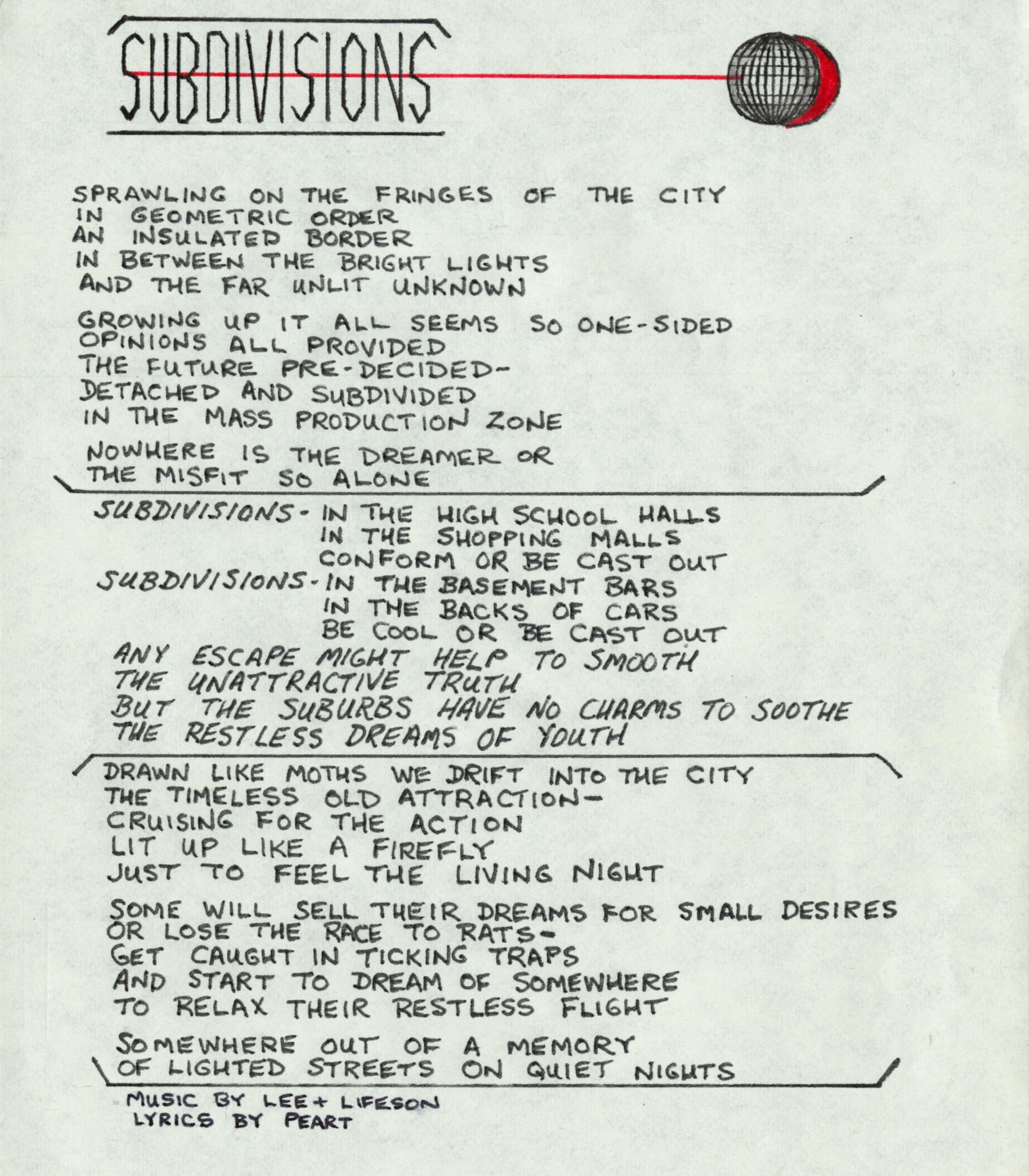
Lyrics by Neil Peart; Music by Geddy Lee and Alex Lifeson
Courtesy of the Canadian Museum of History
Watch: Subdivisions
Written as a commentary on suburban life, the music video for Rush' song "Subdivisions" paired the lyrics of the song with images of Scarborough neighbourhoods and secondary schools as well as clips of bustling downtown Toronto in the early 1980s. Listen for the heavy use of electronic instrumentation in the song, one of the most enduring sounds of the 1980s and a trend Rush adopted early in the decade.
This online exhibition uses third-party applications including Spotify and YouTube. Check with your organization’s web administrator if you are unable to access content from these channels in the exhibition.

Watch the music video for Rush’s 1981 hit song, “Subdivisions”. Courtesy of Rush. Please note: this third-party video does not provide closed captions.
View TranscriptSprawling on the fringes of the city
In geometric order
An insulated border
In between the bright lights
And the far unlit unknown
Growing up it all seems so one-sided
Opinions all provided
The future pre-decided
Detached and subdivided
In the mass production zone
Nowhere is the dreamer
Or the misfit so alone
Subdivisions —
In the high school halls
In the shopping malls
Conform or be cast out
Subdivisions —
In the basement bars
In the backs of cars
Be cool or be cast out
Any escape might help to smooth
The unattractive truth
But the suburbs have no charms to soothe
The restless dreams of youth
Drawn like moths we drift into the city
The timeless old attraction
Cruising for the action
Lit up like a firefly
Just to feel the living night
Some will sell their dreams for small desires
Or lose the race to rats
Get caught in ticking traps
And start to dream of somewhere
To relax their restless flight
Somewhere out of a memory
Of lighted streets on quiet nights…
Hometown Recognition
Over the years, the band has won many awards for its albums, live performances, and music videos. In 1994, they were inducted into the Canadian Music Hall of Fame. Less than ten years later, the band received the same honour at the Rock and Roll Hall of Fame in 2013.
The community of Willowdale, the north Toronto neighbourhood where Alex Lifeson and Geddy Lee started the band, has recognized its hometown heroes by dedicating a park in the band’s honour.
Opened in 2016, the Lee Lifeson Art Park celebrates art in the community with a musical theme, including a small outdoor stage, amphitheatre, and interactive sonic sculptures. As part of the park’s grand opening, Toronto Mayor John Tory presented Lifeson and Lee with the Key to the City.

A bird’s eye view of plans for the Lee Lifeson Art Park in Willowdale, North York. The park is approximately 7,000 square metres and includes gramophone-inspired permanent art installations among other musically-inspired features to highlight Rush’s contributions to the city.
Courtesy of the City of Toronto
A Rock Legacy
After several decades together, Rush disbanded in 2018. But the band continues to have devoted fans all over the world.
On January 7, 2020, Rush drummer Neil Peart died of glioblastoma at the age of 67. In the wake of his death, numerous tributes have celebrated his musical legacy, not only as drummer in the band but as a gifted songwriter.
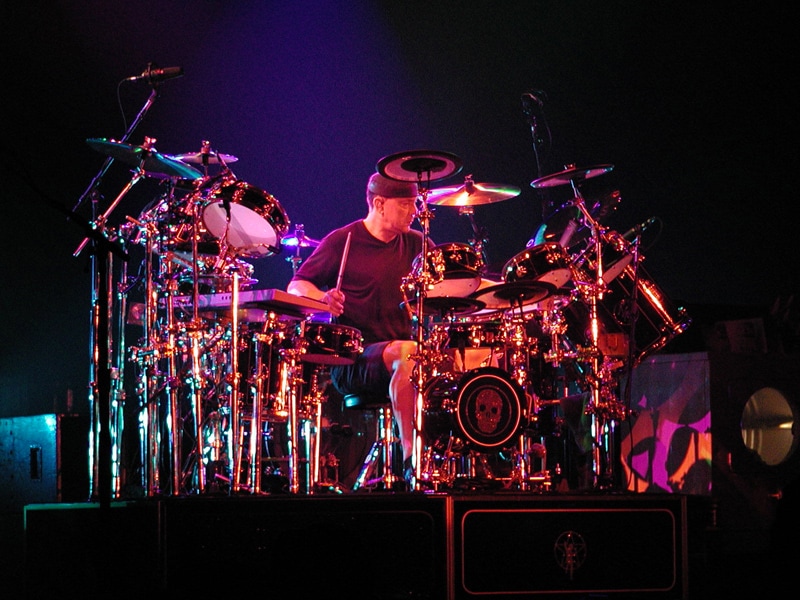
Photo by Enrico Frangi, licensed via Creative Commons
[A]bove all, his lyrics made people think — Rush fans were liberal, conservative, religious, non-religious —but they all united around their respect for the band and their admiration for how Neil could articulate their experiences, or give them a new way to look at an issue.
—Donna Halper, former radio DJ, credited with debuting the band on US radio, 2020
Dive Deeper
David Calcano, Lindsay Lee. Rush: The Making of A Farewell to Kings: The Graphic Novel. Illustrated by Juan Riera and Ittai Manero. Toluca Lake, California: Fantoons, 2019.
Geddy Lee. Geddy Lee’s Big Beautiful Book of Bass. New York: Harper Collins, 2018.
Martin Popoff. Contents Under Pressure: 30 Years of Rush at Home and Away. Toronto: ECW Press, 2004.
(Header Image by Patrick Harbron)


